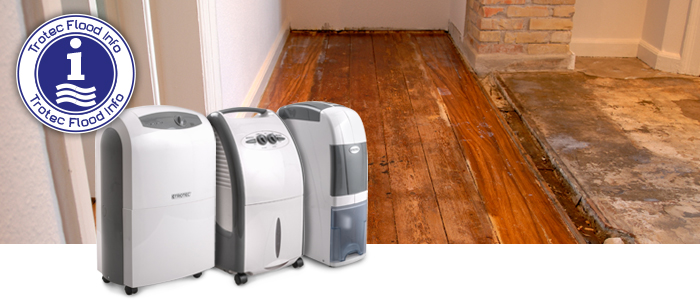
When after a flood the worst is over and the water levels get back to normal the real work just begins. Water has to be pumped out of cellars and other rooms, wet flooring like carpets, wet furniture and other inventory must be brought out of the house. One of the most frequently asked questions after floods is how long a dehumidification takes. That depends on some different factors. Among other things whether you make the dehumidification on your own or if you ask for an expert’s advice. We want to explain you when it is necessary to ask a specialist.
It is nearly impossible to answer the question for the duration of a dehumidification universally. But you can say that, when there are optimal conditions most dehumidifications need at least three to four weeks. You may think that it is a quite long time. But three main factors influence the duration of the drying process:
- The right device dimension
- The temperature in the rooms which need to be dried
- The air circulation and ventilation
Of course, the building structure takes an influence on the duration as well but that is nothing you can change. We already elaborated on the device dimensions in our last article. So let’s focus on the temperature.
The temperature is an important factor for the dehumidification
On the one hand the water absorption of the air increases when the temperature goes up. That means that air with 20 °C can absorb almost twice as much water than air with 10 °C. Of course, that is crucial for the drying process because the more water the air can transport the faster the drying works.
On the other hand the temperature crucially influences the partial water vapour pressure (often just called vapour pressure). That vapour pressure rises when the temperature goes up and that accelerates the drying process. When the temperature rises from 10 °C to 20 °C in the same time twice as much water can be absorbed by the air out of the wall.
For a quick drying process temperatures between 15 °C and 25 °C are ideal. When it is colder the dehumidification takes much longer. In such a case you can heat up the rooms with electric heaters. In typical one-family houses with cellar areas of about 60 to 70 m² heaters with a capacity of 3 kW are sufficient like our electric fan heater TDS 20.
Temperatures over 25 °C are not useful as well because most of the produced heat gets lost through the outer walls and heating just is inefficient. Extremely high temperatures can even harm the building structure.
When heating up for any reason is not possible an alternative to condensation dryers are adsorption dryers because these dryers also work when the temperatures lie under 10 °C.
Halve the drying duration!
Another professional hint for the dehumidification is ventilation. When the air is doesn’t move the drying process slows down extremely. But you can easily avoid that by moving the air with fans. The faster the air is moving the faster walls dry. From experience, the drying duration takes about half as long when fans are used. Especially the TFV 10 S radial fan and the TFV 30 S are suitable for drying processes but you can also use the devices of the TTV series.
Attention: Don’t open the windows because then always new wet air gets into the house.
Trotec Flood Info: To inform you in any case of damage
We inform you about the following topics in detail:
- Trotec assists flood victims with expertise
- How long does a dehumidification take?
- Should I rent or buy a drying unit?
- Trotec Flood Info: The right moisture measurement after flood damages
- Trotec Flood Info: When do I need an expert?
- Trotec Flood Info: What to do when mould attacks?
- Trotec Flood Info: How to dry floor insulations
- Trotec Flood Info: What to do against the smell after the flood damage?
- Trotec Flood Info: The main facts about drying units

